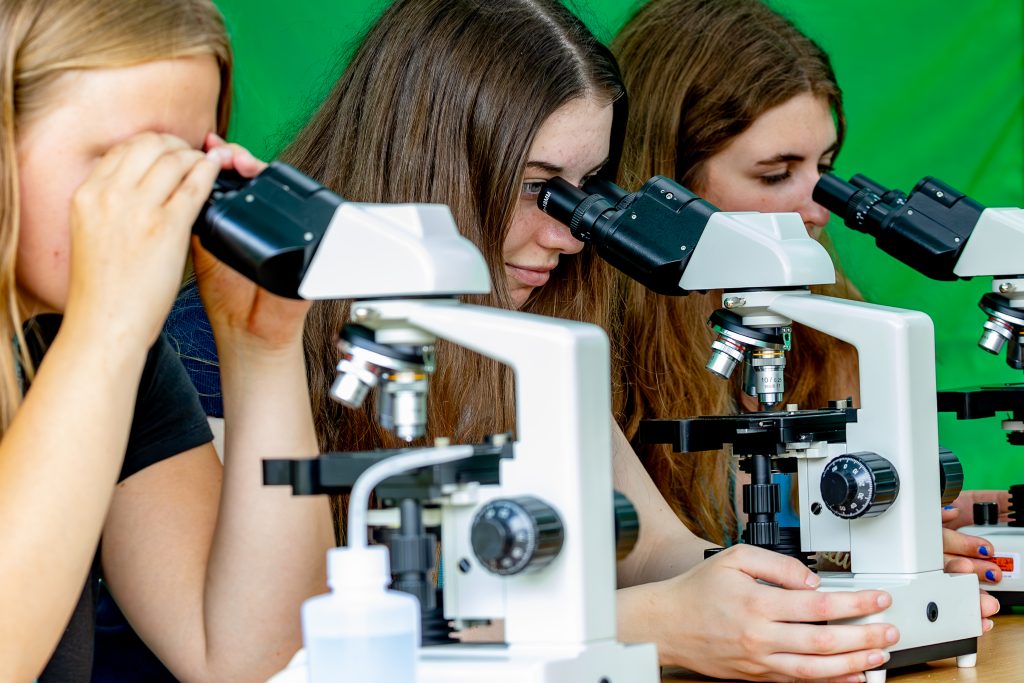In this workshop we review the common causes of plant disease such as viruses and fungi, the impacts these can have both on the plant itself and on humans. We focus on Rose Black Spot, looking for evidence of this on real plants in the Garden’s collection, studying it under the microscope and learning how this disease can be managed. We also visit various plants in the collection to learn about their methods of defence against disease, predators and pests.
Availability
This workshop is available mid April to October.
Learning objectives
Pupils will:
- Identify signs of active fungal disease in roses
- Learn about how the disease is spread and controlled
- Use microscopes to study diseased leaves
- Understand some of the physical and chemical defences plants have to protect themselves from attack by predators or pathogens

Curriculum links
This workshop supports the following parts of the curriculum:
- AQA 4.3.1.1 Communicable diseases
- AQA 4.3.3.1 Detection and identification of plant diseases
- AQA 4.3.1.4 Fungal diseases
- AQA 4.3.3.2 Plant defence responses
- Edexcel 5.9B, 5.10B, 5.11B
- OCR 21st century science B2.2.3, B2.2.6 How do organisms protect themselves against pathogens?
Complimentary self-led activities
If you are looking for ideas of activities to self-lead in the Garden after your workshop ends, we recommend:




